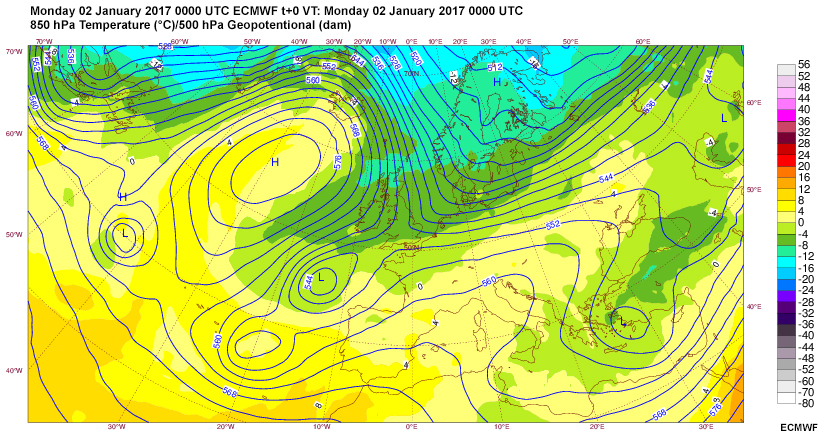Introduction

Ensemble Prediction System (EPS) guidance allows forecasters to provide probabilistic and forecast uncertainty information to various customers. Typically, an EPS produces more data than can reasonably be integrated into most operational forecasting settings. Therefore, EPS products have been developed to represent the distribution of the different runs ("members") based on common statistics.
Question
In what ways can probabilistic forecast guidance positively influence your forecast process? Choose all that apply.
The correct answers are a), c), and d).
Incorporating probabilistic guidance into your forecast process is an advantage not only for deciding whether watch and warning criteria will be met, but also for deciding if user-specific thresholds are likely to be exceeded, such as the temperature at which certain aircraft can no longer operate or the temperature at which asphalt roads will rupture. Decision-makers rely on weather information like this every day to determine the appropriate precautions to take, develop contingency plans, and adequately prepare the community in advance of a weather event and its potential impacts.
In this lesson, you will assume the role of a forecaster in the Deutscher Wetterdienst (DWD), a German Meteorological Office. You will investigate forecast guidance for a potential winter weather event across Germany on Saturday, January 7. You will assess deterministic and probabilistic forecast guidance and regional observations, as well as communicate this forecast information to your fellow forecasters at shift changes.
Your office often receives phone calls from various agencies responsible for clearing the roads of snow, and they typically need information about event timing, spatial extent, temperatures, and amount of expected snowfall. You will speak with a local decision-maker about what to expect during the weekend based on their needs.
During the first few days of the new year (2017), the country was affected by a cold spell resulting in 850 hPa temperatures reaching between -8°C to -12°C (shown in the loop below), and surface temperatures near 0°C.

A loop of 850 hPa temperature and 500 hPa geopotential heights valid at 0000 UTC from January 2 through January 4, 2017.
In the next section, you will look at the forecast guidance from January 4, approximately three days before the main precipitation event across Germany.